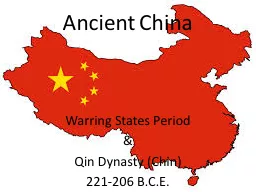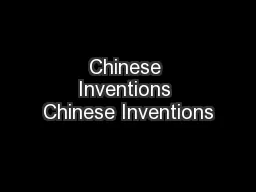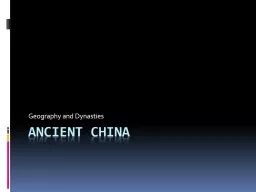PPT-Ancient China Unit 1.4 Mr. Duncan
Author : debby-jeon | Published Date : 2019-06-30
River of Sorrows Chinese history begins along the Huang River valley or Yellow River where the Shang Dynasty arose The Yellow River got is name from the loess
Presentation Embed Code
Download Presentation
Download Presentation The PPT/PDF document "Ancient China Unit 1.4 Mr. Dunc..." is the property of its rightful owner. Permission is granted to download and print the materials on this website for personal, non-commercial use only, and to display it on your personal computer provided you do not modify the materials and that you retain all copyright notices contained in the materials. By downloading content from our website, you accept the terms of this agreement.
Ancient China Unit 1.4 Mr. Duncan: Transcript
Download Rules Of Document
"Ancient China Unit 1.4 Mr. Duncan"The content belongs to its owner. You may download and print it for personal use, without modification, and keep all copyright notices. By downloading, you agree to these terms.
Related Documents














